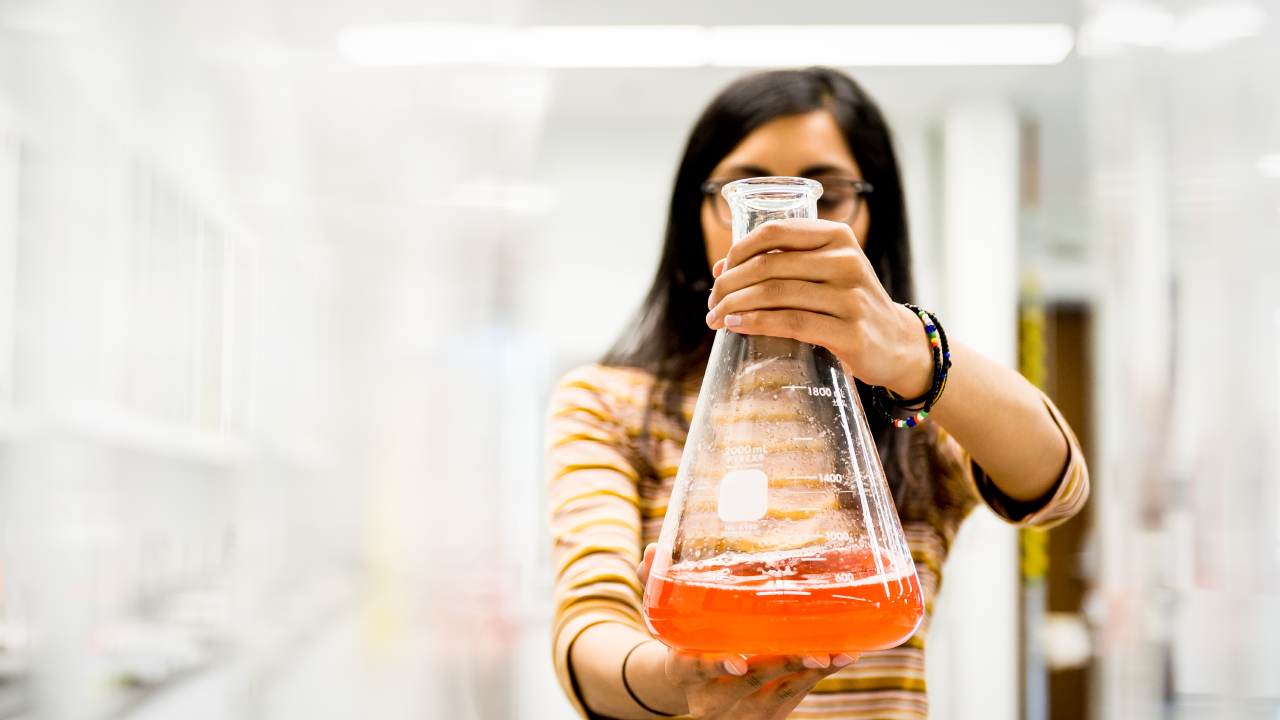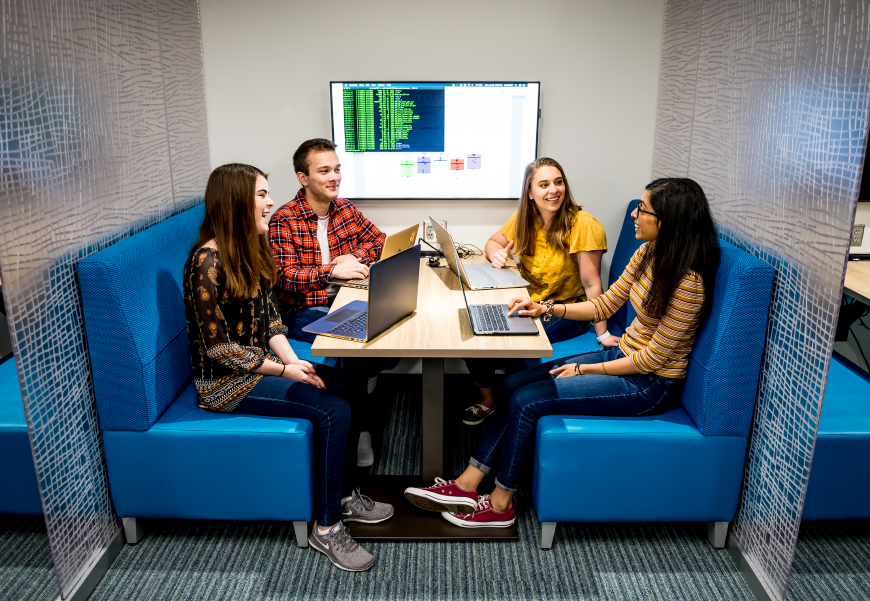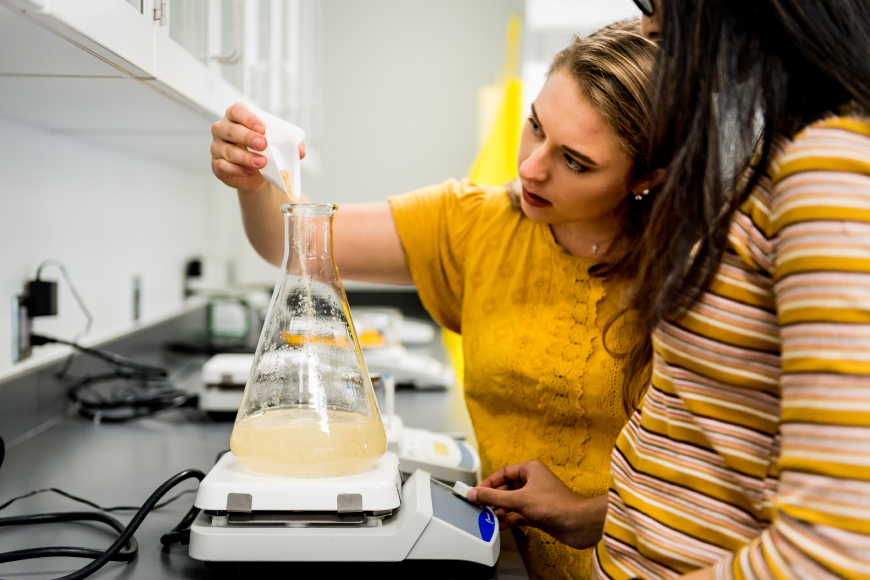
Every semester, students in the University of Minnesota’s College of Biological Sciences lead their own explorations into research through an approach known as “active learning.”
“It’s about trying to get the students to have a role in their own learning,” said Adam Engelhardt, assistant education specialist with CBS’s Department of Biology Teaching and Learning (BTL). “It’s designed to be the opposite of the traditional university model, where you just have a big auditorium and there’s someone at the front who’s talking, and the students are just sitting there taking notes.”
This fall, a newly opened laboratory is providing a better-equipped space for CBS students to delve into these active learning research experiences. The Active Learning Lab, which will serve more than 350 CBS students each semester, supports groups of students working to define and pursue research questions with real-world relevance that are based on subjects from their coursework. The lab was developed as part of a larger, $9.9 million renovation funded by CBS on two floors of the Biological Sciences Center.
Traditionally, students in a biology lab are assigned an experiment and receive a list of procedures to follow. They go through the steps, often without questioning them, and expect to get the same result as everyone else. That’s not how it works with active learning.
Instead, CBS students in the series of courses known as Foundations of Biology choose one of five research areas, ranging from experimental evolution with microbial communities to zebrafish and environmental toxicology, in which to base their research. They then work in small groups to define a research question and set up an experiment of their own. Along the way, they collaborate to solve problems and even learn from their failures.

The active learning format gives all students an opportunity to participate in research, ensuring they receive experience that can both reinforce what they are learning in class and prepare them for the next opportunity, such as a position in a faculty member’s lab or a career in the biosciences. The U is seen as a leader and a model for institutions in the area of active learning, said Valery Forbes, PhD, dean of CBS.
“The way we teach biology has changed dramatically and continues to evolve,” Forbes said. “We know that active learning is really effective, so in CBS we help our students learn biology by doing biology. In contrast to most laboratory courses, this new space will enable students to fully participate in the scientific process, to get creative, to collaborate, and to try things they otherwise might not.”
As the new space hums with student projects, faculty are also planning to conduct a bit of research—not in the new Active Learning Lab, but on the lab itself. BTL researchers will explore how the new lab affects the success of the active learning approach, said Christina Kramer, collegiate facilities manager at CBS. Active learning, for example, has been shown to help address disparities in STEM, increasing female students’ participation in the classroom. It’s important to study whether the new lab can further contribute to benefits like this.
“Part of the mission of Biology Teaching and Learning is that they do research into how we do biology education,” Kramer said. “They’re in the middle of a research project to compare how the course was operating in the old space to how it’s operating in this space.”

Equipped for Student Research
The Active Learning Lab replaces a series of three smaller rooms designed when the Biological Sciences Center was constructed in the early 1970s. In these lab spaces, students and lab staff alike struggled with tight walkways, less storage, no windows, and only narrow doorways to link the three spaces together. The setup made it especially difficult for undergraduate teaching assistants to know when students had a question or needed help conducting their research.
In the new Active Learning Lab, natural light from numerous windows illuminates a wide-open floor plan furnished with countertops that provide plenty of room for lab work. Lab stations designed for specific functions, such as supplying gas for Bunsen burners, form rows through the center of the lab, some of them adjustable in height to be accessible to all students. Tracing the perimeter on one wall are square tables coupled with white boards and computer monitors, ideal places for groups to huddle, while lining the other are storage and equipment stations for the likes of glassware, petri dishes, and other supplies.
In and nearby the main lab room are new and refurbished walk-in coolers and incubators to provide ample storage for temperature-controlled experiments—a crucial tool for biological research. Immediately outside the lab itself is a commons space that provides an area with booth-style seating, tables, and monitors for CBS students to study or work in groups.
All of these lab stations, and the variety of experiments that will take place in them, lead to the exciting prospect that students will experience a “cross-pollination” of learning, said Sandy Mand, coordinator of CBS instructional labs with BTL.
“We’re hoping that by having all this open space, students will learn more about one another’s projects and they can collaborate,” she said.
At the entrance to the Active Learning Lab, several undergraduate teaching assistants, who have themselves already completed the Foundations of Biology courses, stand ready to guide their fellow students and ensure the safety of lab activities.
Overall, the space meets two important needs for the college: accommodating the ballooning enrollment in its courses and providing an ideal space for today’s innovative undergraduate instruction—while leaving room to reconfigure it if needed.
“This renovation was looking ahead and saying, ‘here’s the projects we have, this is how we can accommodate them,’ but also, ‘what happens if we change projects?’” Mand said. “We want it to be flexible for the future.”